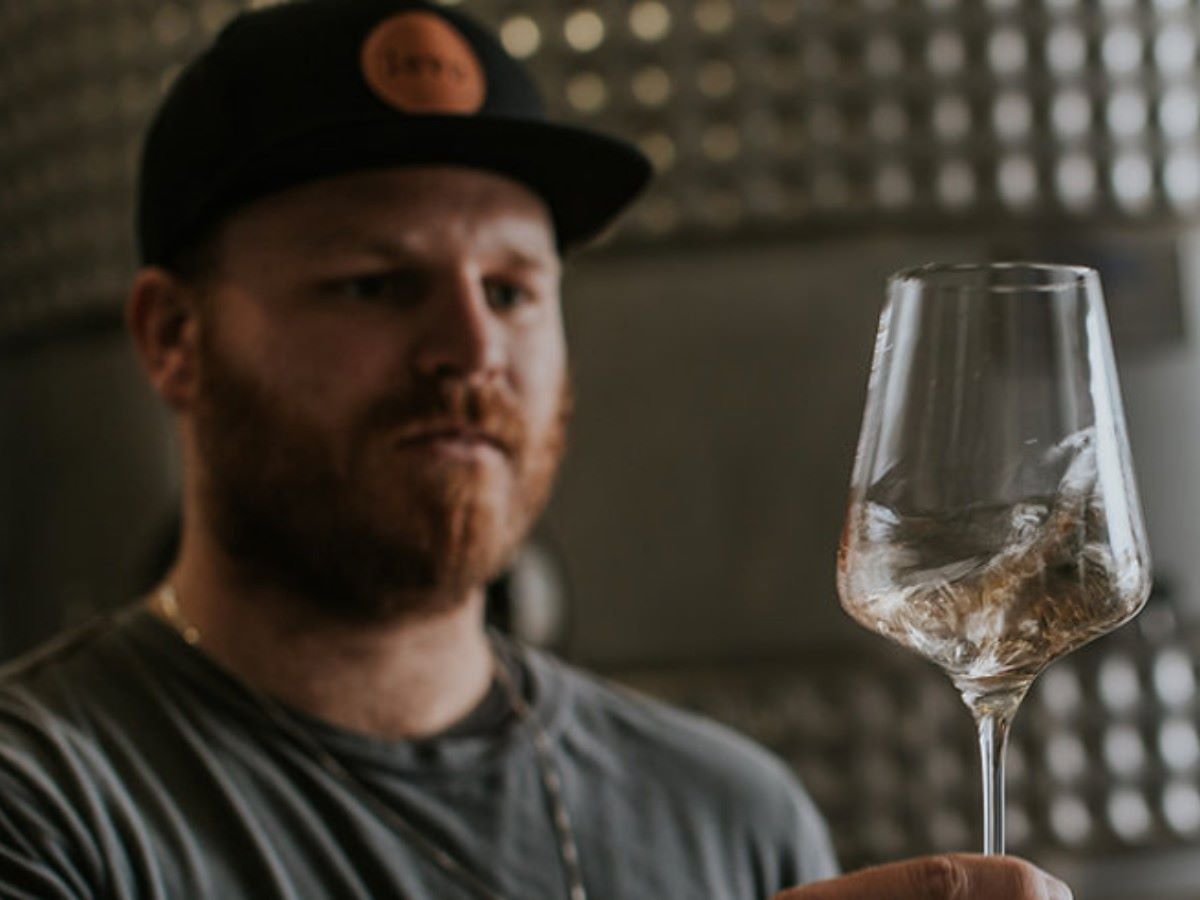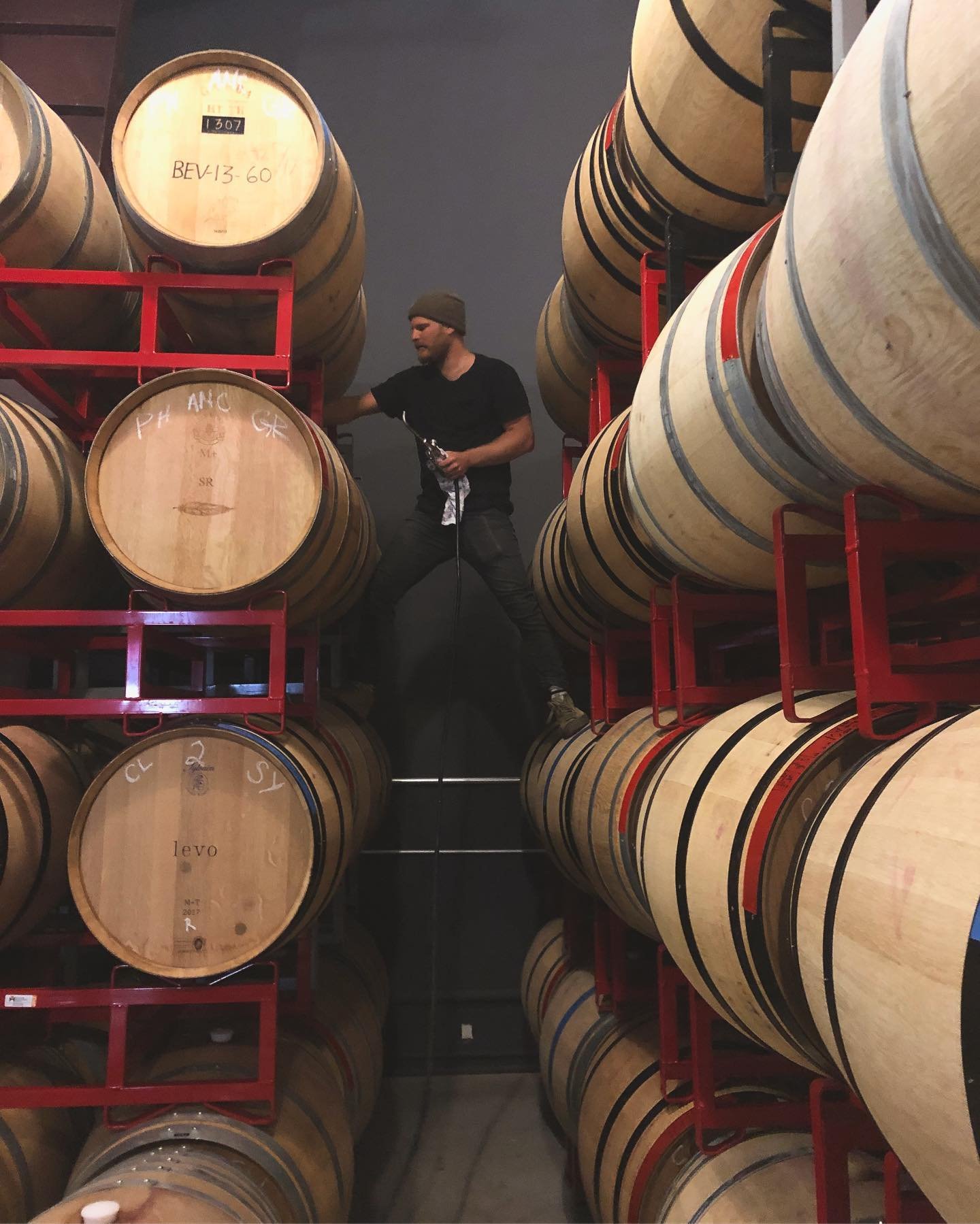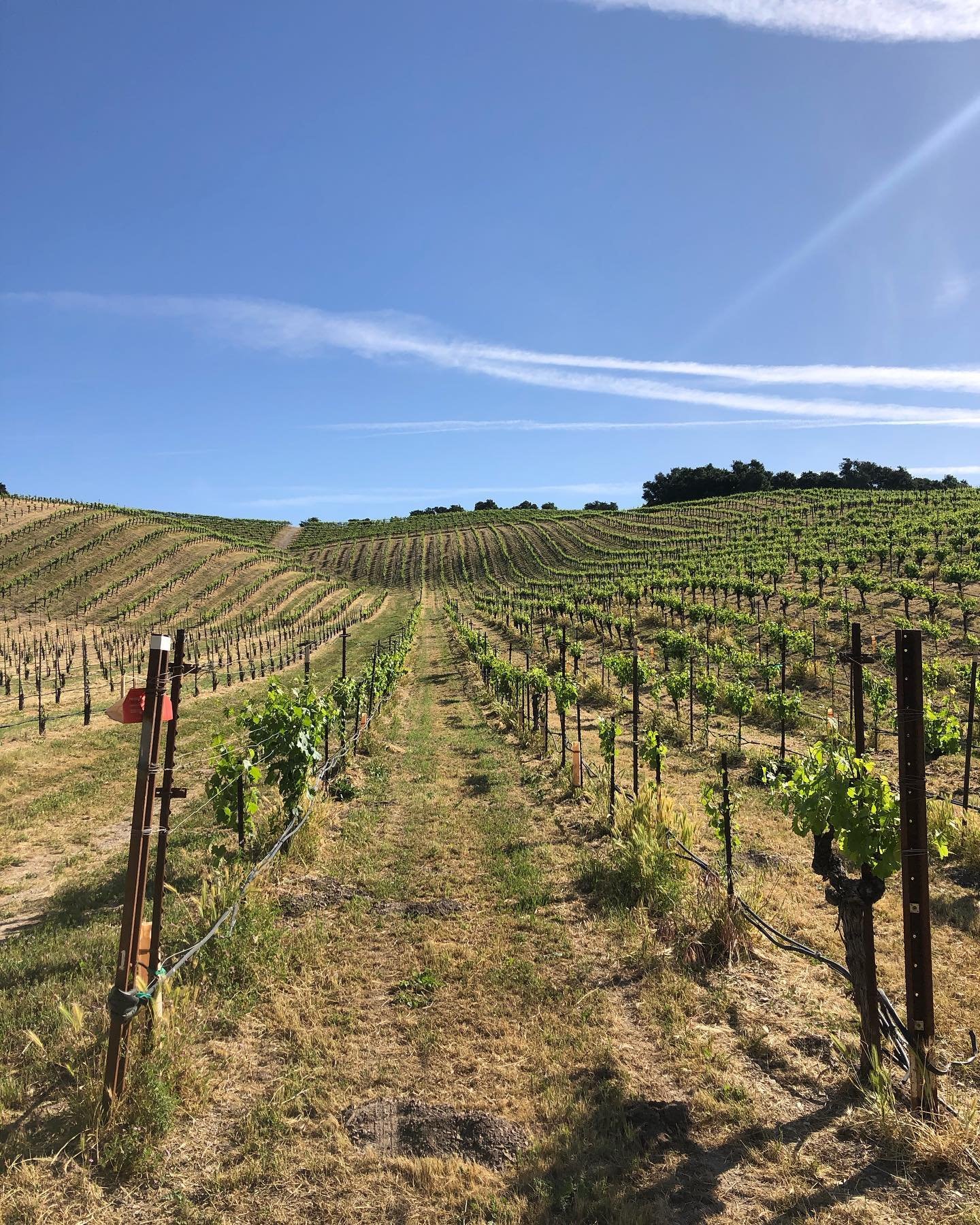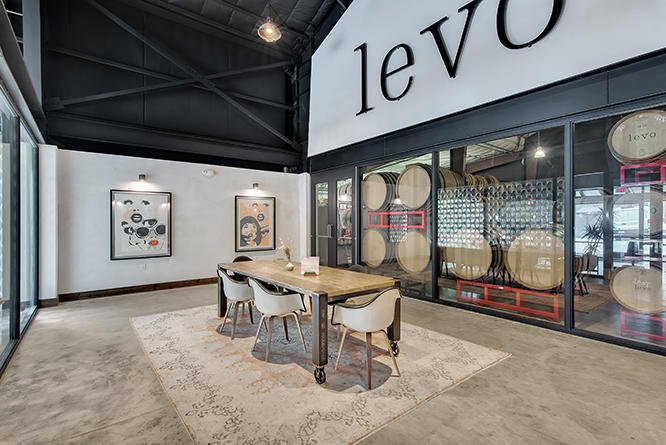Levo Wines
Get the Dirt from winemaker Bret Urness
“You can feel everyone’s passion (in Paso) and I’m just excited to be apart of it. We have such an array of microclimates and awesome farmers. It makes our wines captivating and able to compete with the best.”
In 2011 I started what is now LEVO wine with my family and a good friend Jamie Traylor. After receiving a heaping pile of rejection letters from all CA University’s offering enology and viticulture, I decided it time to wave goodbye to academia and create my own path in the wine world. Soon I ended up in Portugal’s Douro Valley, with a pair of boots & journal- I realized pretty quickly I didn’t need much else except good fruit, barrels & some siphoning tubes to make soulful wines. Since then I’ve stuck to these primitive wine making ideas. I’ve kept my head down, somewhere in between a caffeine high and a drunken stupor, pushing away the tantalizing voice of compromise and overused ideas of tradition.
1. What was your first vintage year? 2012
2. How many cases do you make per vintage? 1500-3000 cases depending on vintage quality.
3. Do you have a Tasting Room? Yes, by appointment daily. Please contact me at
4. If not you, who is your winemaker? Me and my assistant winemaker Taylor Mathiesen.
5. How did you get your start in the winemaking business? I was a janitor for a winery in Idaho and got hooked instantly. So I packed my bags and headed for CA. I ended up going to Portugal for a while for a wine internship. Then came back to the Central Coast and worked in vineyards for a few years, planting and pruning.
6. What wine made you want to become a winemaker/start your own winery? Wine making encapsulates a lot of my favorite things. Farming, food, culture, creativity and heavy equipment :)
7. What varietals do you work with? Which varietal/wine is your favorite to make? Anything Rhone. The vineyards just have to be farmed properly. I “focus” on Syrah, Grenache, Roussanne, Grenache Blanc, & Viognier. Grenache is probably my favorite when it behaves.
8. What vineyards do you source from? Why? I source fruit from a bunch of microclimates throughout the central coast to get a spectrum of flavors. Some plots are hotter (Ballard Canyon) and then I work my way up through Los Alamos and then into Santa Maria and grab some acid, pepper and bacon on the way up (if we are talking Syrah). Really trying to capture the essence of the entire central coast. Organic is important to me
9. What type of oak treatment do you use? Why? It all depends on the variety and its personality. Syrah & Petite are naturally big so I use a fair amount on it. The full-bodied, the smaller the barrel, higher toast and thinner staves. Lighter wines like Grenache are aged in Demi Muid as it is all about being pretty w/ acidity, nuance and brightness. I treat the whites and rose about the same as Grenache.
10. What do you love about your winemaking region? The diversity of microclimates and expressions from each varietal makes the central coast very dynamic.
11. What's the story behind your name/label? My dad is a pilot and I always imagined freedom as the feeling you get when you go airborne. My name has changed a lot, but it is now forever and always, levo, which means “to rise or elevate” in latin. It’s all about freedom and creativity.
12. What's the one thing you wish someone had told you about the wine business before you started your own winery? Don’t worry about all the trends and scores. It’s a long haul. Make sure you enjoy the ride.
13. We're curious…do you even get tired of drinking your own wine? No, I make wines I love to drink. It’s actually really hard for me to NOT open them. The wines are always evolving so its fun to check in and see how they are progressing. It’s a ‘sobering’ experience opening your own wines. You never know what stage they may be in, all you know is you have to sell it.
14. What’s so great about being small? What can you do that wouldn’t be possible for larger wineries? Being small allows us to be nimble in our production and adjust to the vintage quickly. It allows Taylor and I to be hands on and craft the wines in a very personal manner, take our time, be methodical and detail oriented. With great wines, the devil is always in the most minor details.
15. If you could choose another wine region to work in, what would it be? That is a great question. The more wine I make and drink wine from Paso Robles' Willow Creek District, the deeper my passion for the area becomes. I have never seen such freakish soils. West Side Paso is truly a Rhone grape growing utopia. The crazy limestone, steep hills, huge diurnal temperature shifts and vast array of varietals that grow well here. I feel like I have landed exactly where I'm supposed to be. and Paso is truly one of the most dynamic wine growing regions in the world.
That being said, I wouldn't mind reincarnating as a Chablis producer. It would be fun to make some flinty, mineral whites from old vines.
To learn more about the wines of levo, please visit their website or follow them on FACEBOOK and INSTAGRAM.





